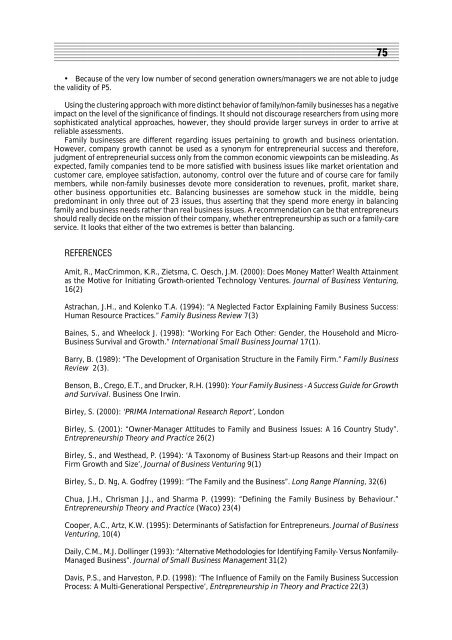Tudástársadalom, vállalkozások, Európa - Ãltalános Vállalkozási ...
Tudástársadalom, vállalkozások, Európa - Ãltalános Vállalkozási ...
Tudástársadalom, vállalkozások, Európa - Ãltalános Vállalkozási ...
Create successful ePaper yourself
Turn your PDF publications into a flip-book with our unique Google optimized e-Paper software.
1234567890123456789012345678901212345678901234567890123456789012123456789012345678901234567890121234567890123456789012312345678901234567890123456789012123456789012345678901234567890121234567890123456789012345678901212345678901234567890123123456789012345678901234567890121234567890123456789012345678901212345678901234567890123456789012123456789012345678901231234567890123456789012345678901212345678901234567890123456789012123456789012345678901234567890121234567890123456789012312345678901234567890123456789012123456789012345678901234567890121234567890123456789012345678901212345678901234567890123123456789012345678901234567890121234567890123456789012345678901212345678901234567890123456789012123456789012345678901231234567890123456789012345678901212345678901234567890123456789012123456789012345678901234567890121234567890123456789012375• Because of the very low number of second generation owners/managers we are not able to judgethe validity of P5.Using the clustering approach with more distinct behavior of family/non-family businesses has a negativeimpact on the level of the significance of findings. It should not discourage researchers from using moresophisticated analytical approaches, however, they should provide larger surveys in order to arrive atreliable assessments.Family businesses are different regarding issues pertaining to growth and business orientation.However, company growth cannot be used as a synonym for entrepreneurial success and therefore,judgment of entrepreneurial success only from the common economic viewpoints can be misleading. Asexpected, family companies tend to be more satisfied with business issues like market orientation andcustomer care, employee satisfaction, autonomy, control over the future and of course care for familymembers, while non-family businesses devote more consideration to revenues, profit, market share,other business opportunities etc. Balancing businesses are somehow stuck in the middle, beingpredominant in only three out of 23 issues, thus asserting that they spend more energy in balancingfamily and business needs rather than real business issues. A recommendation can be that entrepreneursshould really decide on the mission of their company, whether entrepreneurship as such or a family-careservice. It looks that either of the two extremes is better than balancing.REFERENCESAmit, R., MacCrimmon, K.R., Zietsma, C. Oesch, J.M. (2000): Does Money Matter? Wealth Attainmentas the Motive for Initiating Growth-oriented Technology Ventures. Journal of Business Venturing,16(2)Astrachan, J.H., and Kolenko T.A. (1994): “A Neglected Factor Explaining Family Business Success:Human Resource Practices.” Family Business Review 7(3)Baines, S., and Wheelock J. (1998): “Working For Each Other: Gender, the Household and Micro-Business Survival and Growth.” International Small Business Journal 17(1).Barry, B. (1989): “The Development of Organisation Structure in the Family Firm.” Family BusinessReview 2(3).Benson, B., Crego, E.T., and Drucker, R.H. (1990): Your Family Business - A Success Guide for Growthand Survival. Business One Irwin.Birley, S. (2000): ‘PRIMA International Research Report’, LondonBirley, S. (2001): “Owner-Manager Attitudes to Family and Business Issues: A 16 Country Study”.Entrepreneurship Theory and Practice 26(2)Birley, S., and Westhead, P. (1994): ‘A Taxonomy of Business Start-up Reasons and their Impact onFirm Growth and Size’, Journal of Business Venturing 9(1)Birley, S., D. Ng, A. Godfrey (1999): “The Family and the Business”. Long Range Planning, 32(6)Chua, J.H., Chrisman J.J., and Sharma P. (1999): “Defining the Family Business by Behaviour.”Entrepreneurship Theory and Practice (Waco) 23(4)Cooper, A.C., Artz, K.W. (1995): Determinants of Satisfaction for Entrepreneurs. Journal of BusinessVenturing, 10(4)Daily, C.M., M.J. Dollinger (1993): “Alternative Methodologies for Identifying Family- Versus Nonfamily-Managed Business”. Journal of Small Business Management 31(2)Davis, P.S., and Harveston, P.D. (1998): ‘The Influence of Family on the Family Business SuccessionProcess: A Multi-Generational Perspective’, Entrepreneurship in Theory and Practice 22(3)









